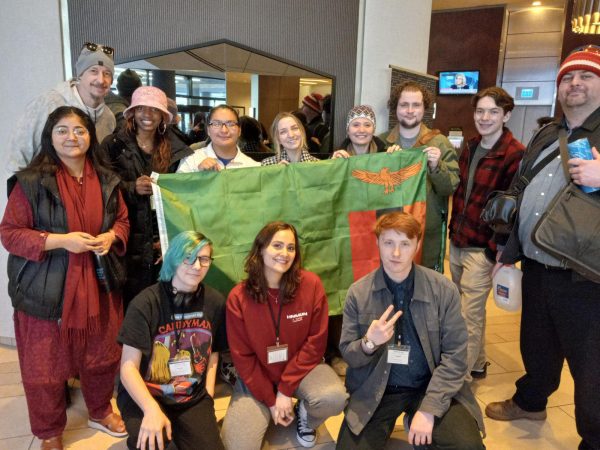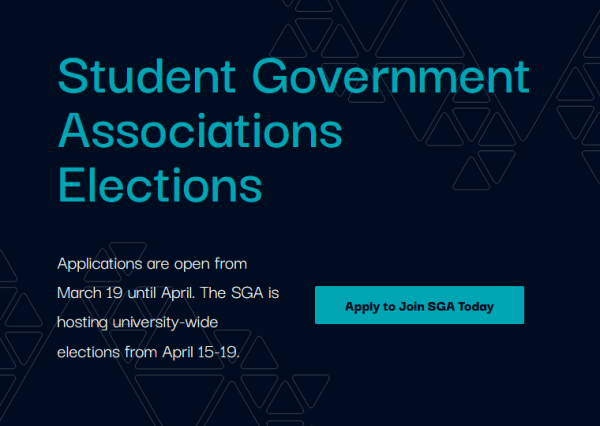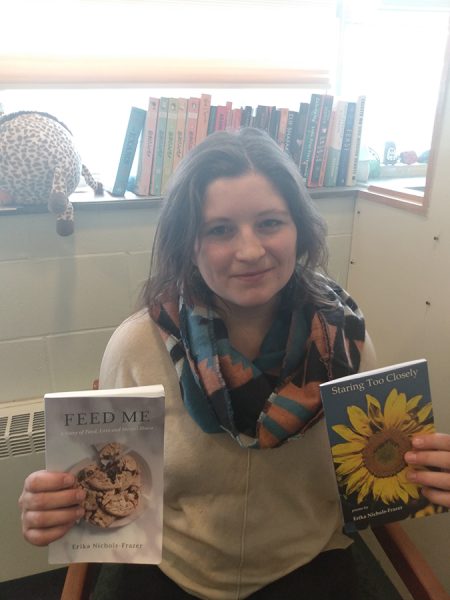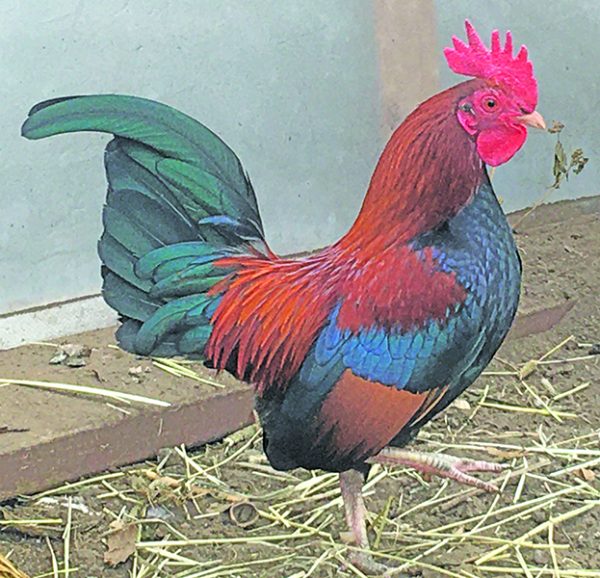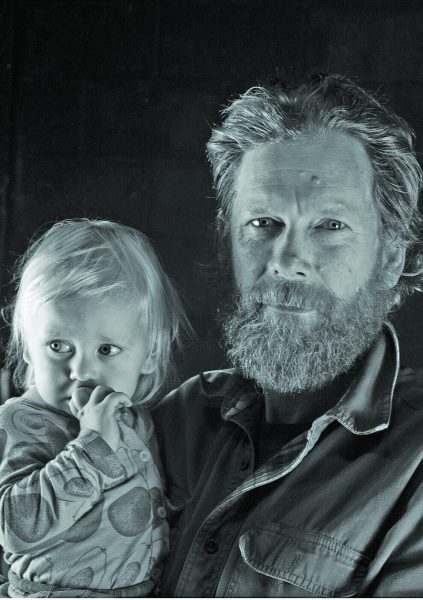Patrick gives the finger
Pat McGinn, Johnson State College junior, has been a professional fingerboarder for almost a decade and continues to be involved in the fingerboard community. While the idea of a fingerboard may seem odd to some, generations have grown up around these small skateboards and some have taken them quite seriously.
How did you get into fingerboarding?
It was fourth grade and my friend, Mike Schneider, had just started fingerboarding. I think what we first did was we would karate chop the end of the board with our hand and it would fly in the air and we would catch it. We really thought that was cool. Then, we saw an edit of a guy who, I can’t remember the name, basically showed a bunch of tricks. We later found out he was putting a piece of tape on his board to make his fingers stick which is pretty much cheating. I saw Mike doing it a lot because of that guy and I started to do it but I really started being serous about it in fifth grade. I would actually try tricks instead of just noodling around. I did it for a while without ever learning to Ollie or anything first. I actually made an audition-tryout video for a wooden fingerboard company when I first started actually doing tricks. It was so bad. I spent awhile on it trying to get good and learn stuff you know.
How long is “awhile”?
A couple years I think. It was probably like seventh grade when I knew I was getting good.
How much time would you spend fingerboarding each day during those years?
Um, too much? I mean I wouldn’t do it at school but I probably put in a good three or four hours every day. Maybe not like all at once but I put in some serious time. I really wanted to be able to do the shit that I saw. I really wanted to actually know what trick I was going to do. For the longest time everyone could do certain tricks but would add random flips out at the end or something and just roll with it. It’s like, yeah that looks cool and good on film but, it’s not on purpose and that doesn’t happen on a skateboard. It’s gotten to the point now that kids are learning and can conceptualize the tricks before they do them. It’s nice to be at the point where I can pick up a fingerboard and do basically any trick I can think of. I mean some I still have issues with obviously and I think everyone does. For example, I can’t nollie heelflip.
So you were into fingerboarding because you were self-motivated or because you wanted to become pro and get free gear?
I think initially nobody ever thought it would become what it is today.
Was the scene not as big when you started?
Yeah, it wasn’t as big and it wasn’t as publicized on the internet. There was this forum online called FFI, Finger Flip Incorporated, and for the longest time I would just rage that. It was where you posted videos and I remember for the longest time I would use Vimeo and another internet forum for posting videos because no one would use YouTube back then, then my friend, Mike Schneider, starting using YouTube and posting videos on there. For a while he didn’t have that many hits, but when he really started to do some crazy stuff, like there is a video him and I did called the Fingerboard Tour, which I think has like 800,000 views or something like that. Which, to me, that’s not a big deal so much as it’s good for fingerboarding to raise awareness.
I feel there is a stigma related to fingerboarding because people view it as a toy but it really relates to skateboarding completely doesn’t it?
You know, people always ask me how many fingers you’re allowed to use and I always think that’s a silly question. I mean, I would never make fun of someone for saying that, but I just have to explain basically what we’re trying to do with fingerboarding, the fingerboard, the finger skateboard, is we’re trying to use it exactly as someone would use a regular skateboard. You only use two fingers.
When did you start being sponsored for fingerboarding?
Well I think my first fingerboard sponsor was Mike.
Your friend Mike Schneider?
Yeah, the one that got me into fingerboarding, he started the company FlatFace Fingerboards. For the longest time he was like, “Dude, you’re not good enough to be on, I don’t want to make crapy fingerboard edits anymore,” and it really motivated me to put in the time and really get better. I looked up to Mike because he was really good and into it. He made really good fingerboards and everyone he made just kept getting better and better and better.
What makes these boards different from the ones you buy at a dollar store?
It’s basically a process of scaling down a skateboard to something like 1/200 in size. There’s a mold and you take little sheets of veneer, shape them, and it’s basically the same process as a skateboard except with less plies. A typical skateboard can come in like eight or more ply where as a fingerboard has five. I want to say the fingerboard comes out at like a tenth of an inch thick depending on how much you sand it but I’m not sure.
The trucks, bearings, and wheels are different as well right?
Yeah, and the main thing that makes them different than Tech Deck’s is the shape, everyone was focused on the shape. Tech Decks have a really shitty, I feel bad saying this, but they have a really bad shape, narrow and heavy. A lot of the first fingerboards that came out were the same size but now they come crazy wide. Our hands got bigger too.
So as your hands grew you needed to make bigger boards?
For a while we had a consistent size but a little bit. Mine is a little larger than most because my middle finger is a lot longer than my pointer finger so I wanted it wider in the middle where my middle finger is and then have more gradual kicks on the nose and tail which is a little uncommon I guess.
How did fingerboarding actually begin?
The original aspect of fingerboarding started with the Dogtown Z-boys, and they would use it along with kids like Lance and Tony Hawk too. They would take big kitchen sinks from restaurants and plan out the lines they would want to do like in between bowls and pools they would skate in Southern California. Instead of fingerboards they were using folded business cards. I believe that around the ‘90s Tech Deck started.
Do you have a fingerboard fitness routine?
You definitely have to workout your fingers naturally I think, just by practicing. Personally I don’t do it much anymore because I’ve found it can be really damaging to my wrist. Overtime I found that I have a bigger bend in my wrist from doing it so much. I have to think about how many years and hours I’ve done it now and it can really mess up your hand if you’re not careful. It can give you really bad carpel tunnel syndrome.
I think in the long run, I’m pretty safe about it. Like don’t fingerboard past the point of it hurting. I’ve had sessions go on for like three or four hours and realized that I’m just trying the same trick and that’s not good.
I would say that the main thing I love to do now, because I love playing piano and I don’t want to mess my wrist up, is to stretch it out a lot. Move my wrist around and try to get the fluid moving and not to do anything too repetitive. The only thing I really do now is practice for like an hour before a big fingerboard event. I don’t do it that much now because I don’t really have to time or space to do it. Ideally, what a person would want if they were going to have a session would be a park where you could stand up and fingerboard because you have the best posture and it’s the safest and you’re not going to damage your wrist or back.
Is there any information about fingerboarding you want to get out there to people who don’t understand it or haven’t heard of it yet? Or is that not really important?
I would say that, well; it’s pretty serious now. It’s a constructive activity, you’re not going to hurt anyone doing it, and you can meet a lot of really cool people doing it, I’m sure I did. You’re doing something that gets you involved in your environment. When someone asks you what’s up and you’re fingerboarding you’re not going to ignore them like you’re on your cell phone or something, you’re going to be social and interact with them.



